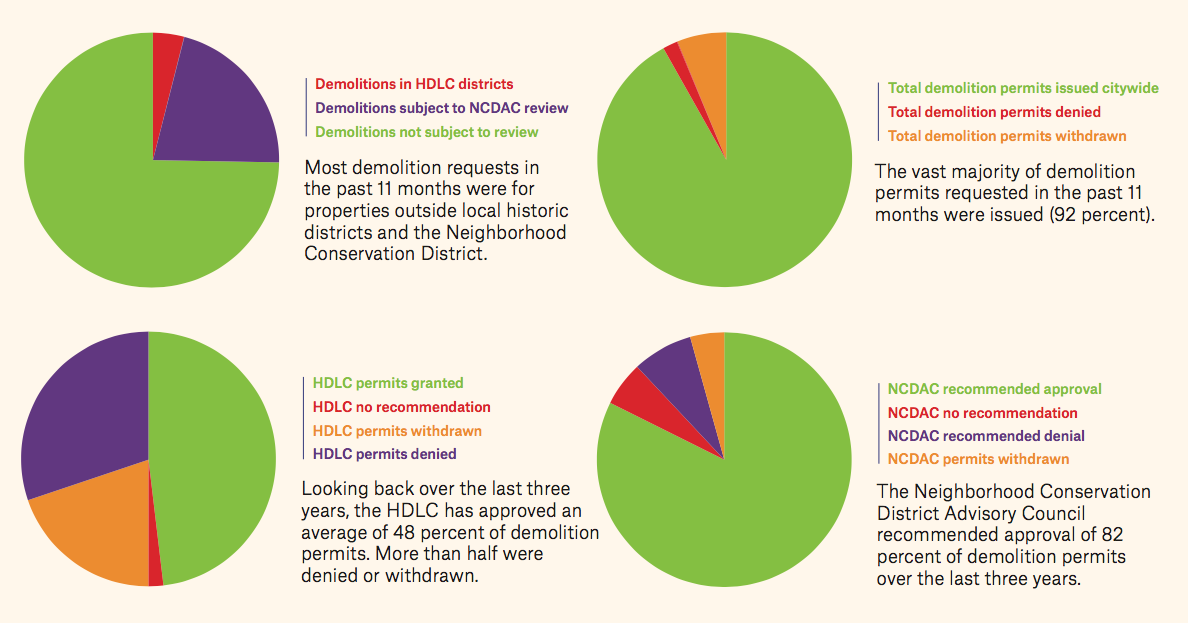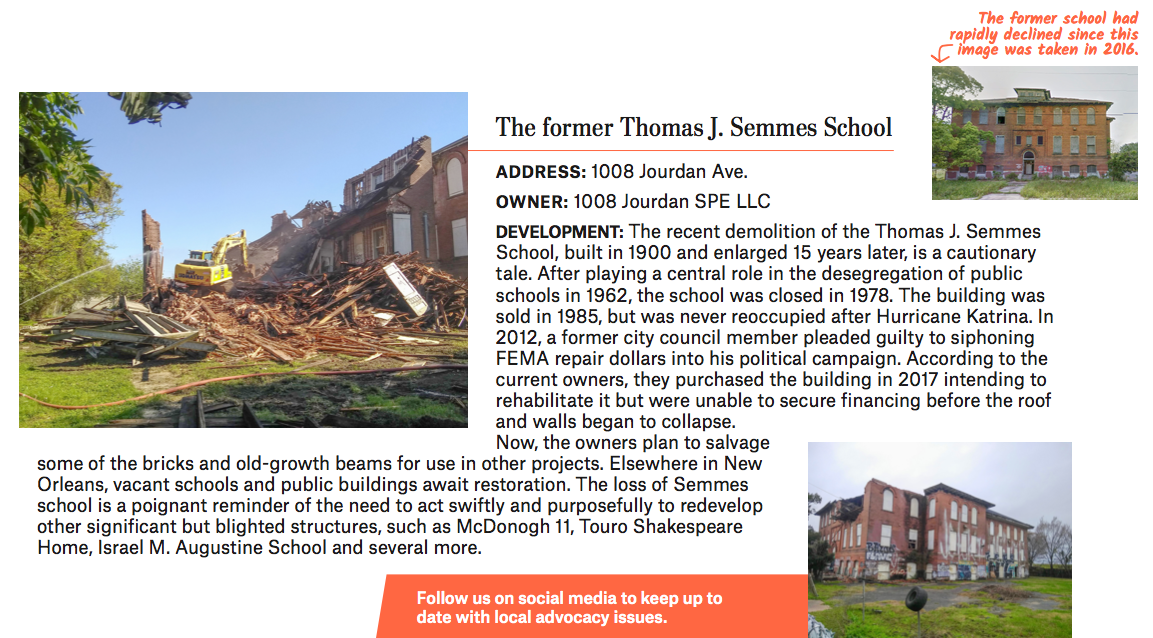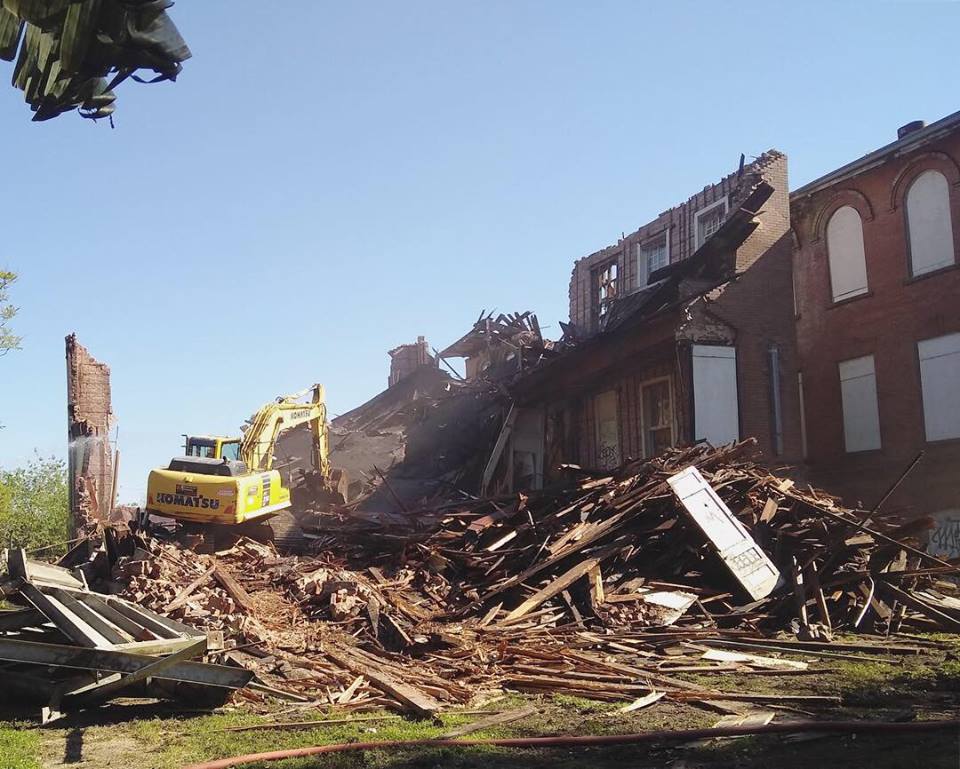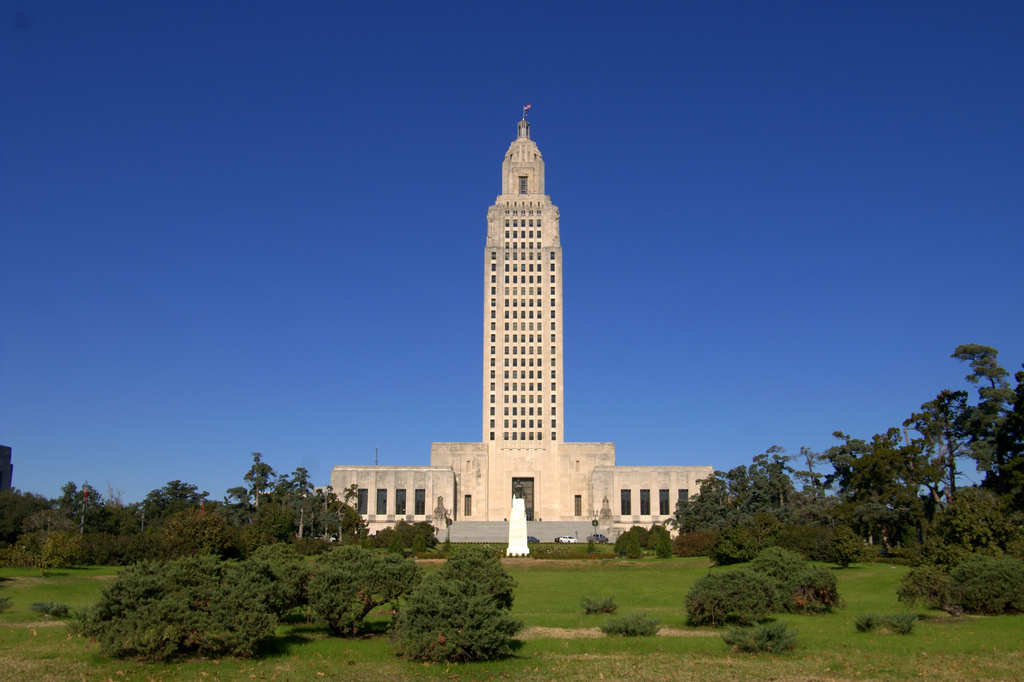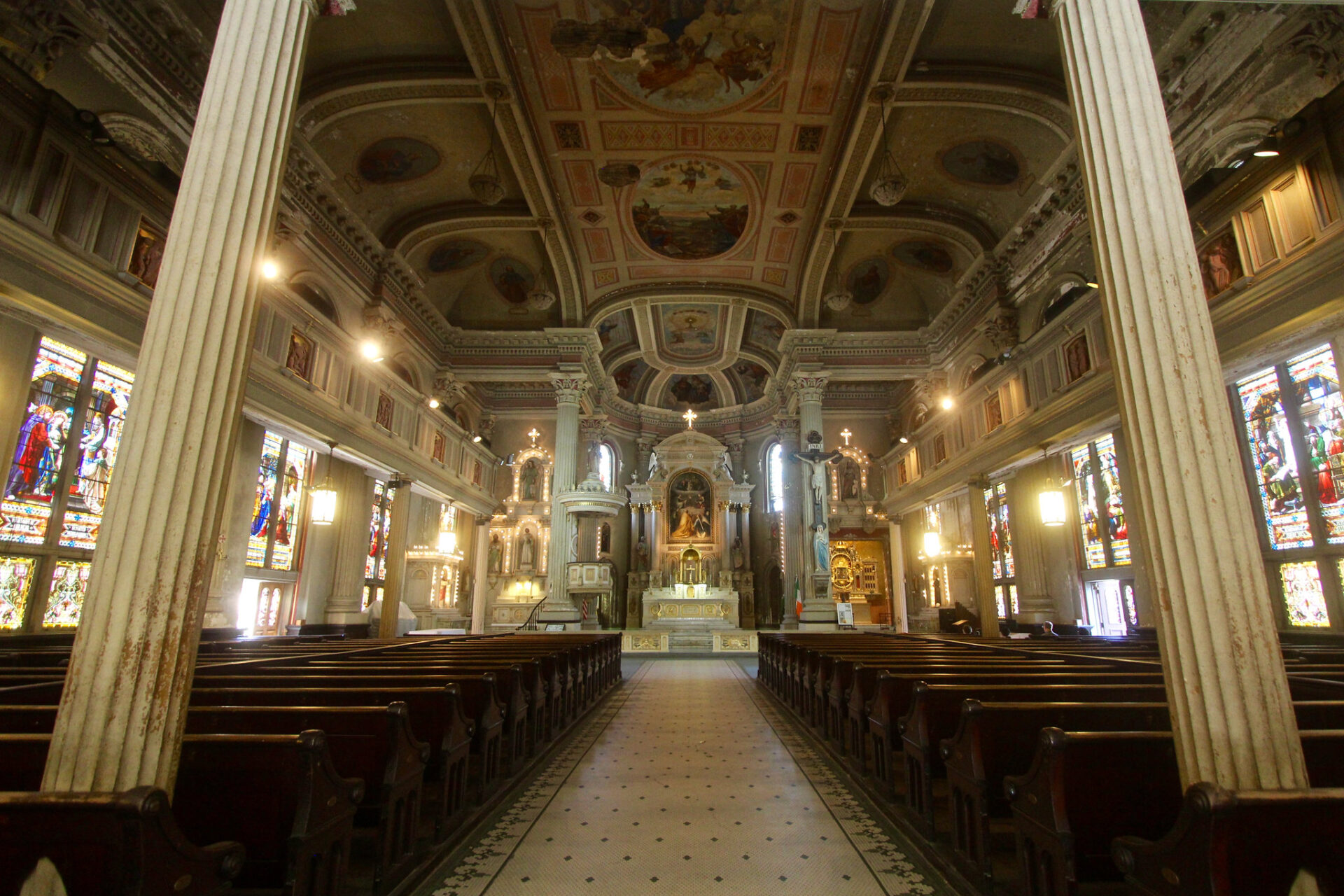This story appeared in the May issue of the PRC’s Preservation in Print magazine. Interested in getting more preservation stories like this delivered to your door monthly? Become a member of the PRC for a subscription!
The city of New Orleans approved 346 demolitions from May 2018 to the beginning of April 2019, according to data.nola.gov, with 70 more in the pipeline. Twenty-three permits were withdrawn and just seven denied.
What does that mean for historic architecture, neighborhoods and the environment?
The 346 demolition permits — approved during the first 11 months of the tenure of Mayor LaToya Cantrell and the current City Council — exclude the partial demolition permits now required for major construction projects in local historic districts (such as demolishing more than half of the roof of a shotgun house to build a camelback addition). They do include demolition of 19 accessory structures, one seven-unit apartment building, two schools and more than 30 townhouses in the Desire Development.
Under Cantrell’s predecessor, Mayor Mitch Landrieu, and the City Councils during his two terms, the city saw more than 4,000 building demolitions approved.
By far the most common buildings to be demolished are single- and two-family homes, and by far the most commonly cited reason is safety. More than 150 of the permits cited imminent danger of collapse or damage from fire.
Often, by the time a demolition permit is requested, a structure has deteriorated to the point at which rehabilitation is cost prohibitive. Providing tools and incentives for early intervention is a key challenge for New Orleans and many cities struggling to reconcile the persistence of blighted and vacant properties with a dearth of affordable housing.
Demolitions in local historic districts are subject to approval by the Historic Districts Landmarks Commission (with optional appeal to City Council). The Neighborhood Conservation District Advisory Council reviews demolitions in older neighborhoods not within the HDLC jurisdiction — roughly those south of Interstate 610, plus the 9th Ward, portions of Algiers and portions of Gentilly — and makes recommendations to the City Council. The City Council must ratify or alter those recommendations, but it overturned a recommendation in fewer than two percent of cases during the last three years, according to internal analysis by the Preservation Resource Center.
In total, the HDLC and NCDAC review approximately only one-quarter of permit requests, meaning 75 percent of demolition permits are issued without analysis of the structure’s condition, use potential or architectural merit. Fostering a culture of reuse, as well as an appreciation for the mid-20th-century styles found nearer Lake Pontchartrain, is essential to preventing unnecessary demolitions.
Nathan Lott is Preservation Resource Center’s Advocacy Coordinator and Public Policy Research Director. He can be reached at nlott@prcno.org.
A few examples of demolition activity
